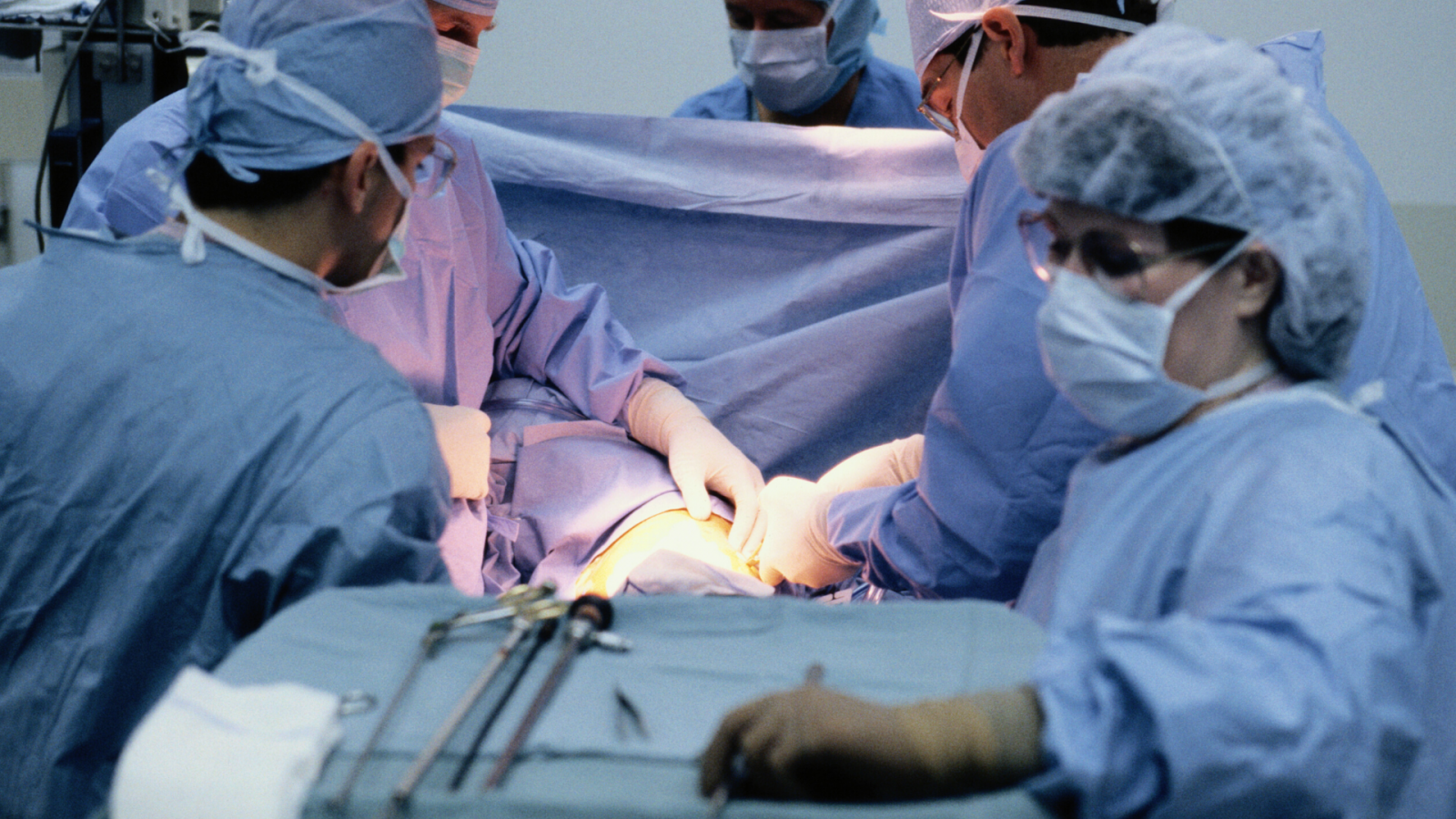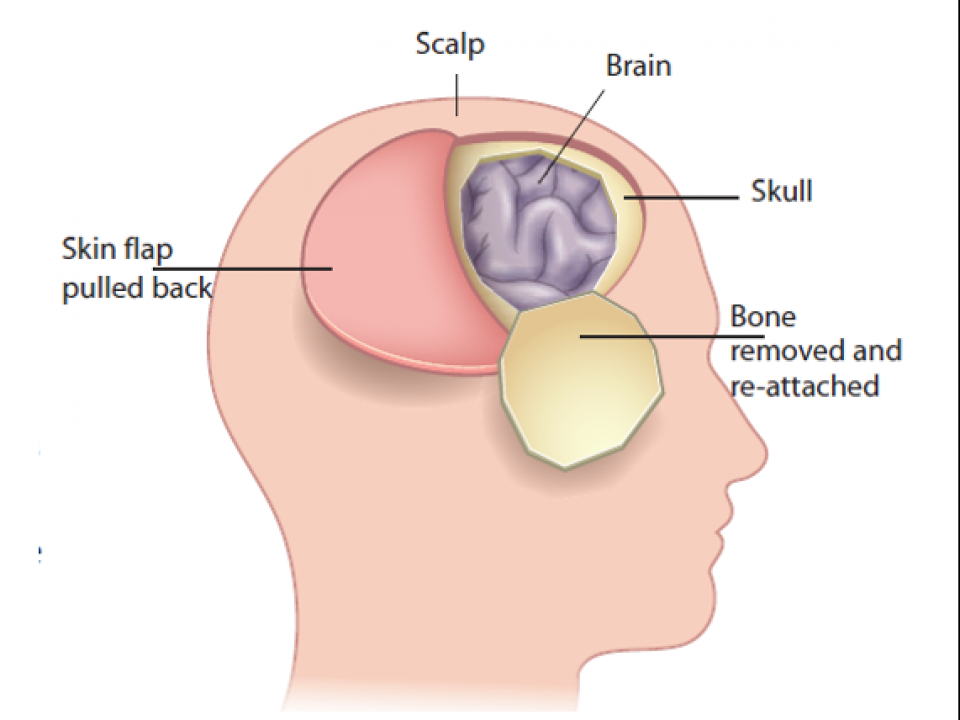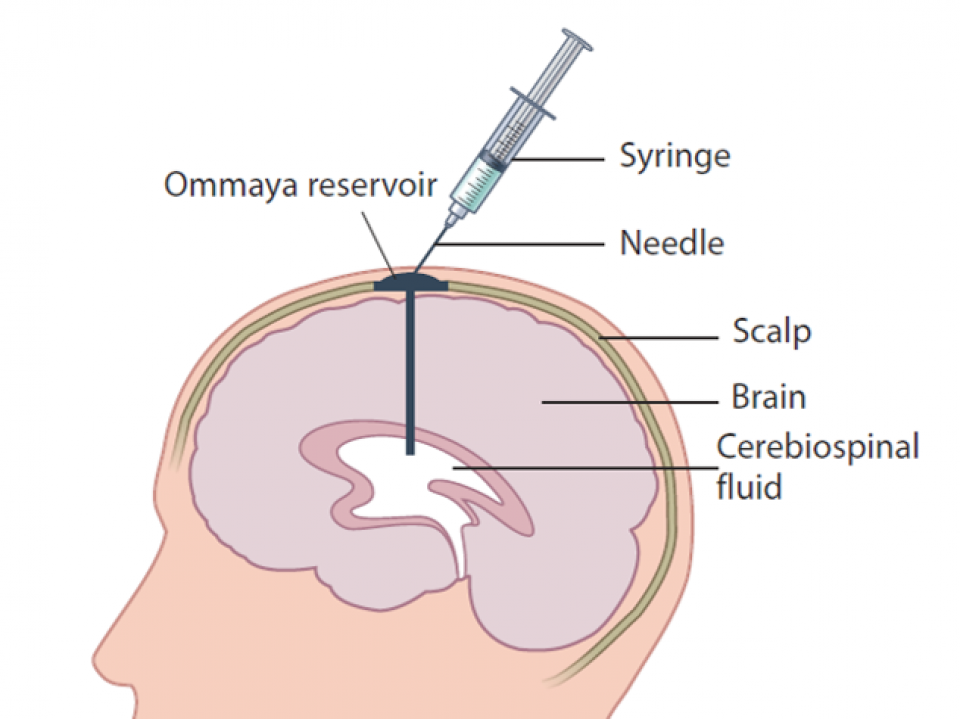What are the types of brain surgery?

On this page:

Craniotomy
A craniotomy is an operation where a piece of the skull is removed to make an opening so that your surgeon can operate on your brain.
The surgeon removes as much of the tumour as possible and replaces the piece of skull that was removed.
The piece of skull (called a flap) is held in place with tiny metal brackets and your scalp is stitched in place over the top.
A craniotomy is usually done under general anaesthetic. The surgeon may shave off an area of your hair before starting the operation - though this is not often done. The aim of the surgery is to remove the tumour without damaging healthy tissue.
Having a craniotomy when you're awake
Some people have a craniotomy while they are awake. If you are awake the surgeon can do checks during the surgery to make sure the surgery isn’t affecting your brain functions, like speech or movement. They can stop operating if they need to.
Although you will be awake you will not feel any pain. You will have a local anaesthetic in the area where they make the incision (cut) to make it numb. You will also be given a sedative to help you relax.
Fluorescence guided surgery (5-ALA)
A treatment called 5-ALA (Gliolan®) can be used in adults who are having surgery for high-grade glioma. Taking 5-ALA makes the brain tumour glow pink under a special light so that the surgeon can see the cancerous (malignant) tissue better and remove it more accurately. Normal brain tissue appears blue.
5-ALA is given as a drink 3-4 hours before surgery. Very rarely 5-ALA can cause side-effects such as making you temporarily more sensitive to light (photosensitivity), lowering your blood pressure and affecting your liver function.
Stereotactic surgery
Stereotactic surgery uses scans and computer technology to give a 3D image of the brain. This helps the surgeon to target the surgery very accurately. This means your surgeon can safely remove as much abnormal tissue as possible, while doing the least damage to normal brain tissue, even if the tumour is very small or is deep within the brain.
Transsphenoidal surgery
This is a type of brain tumour surgery done through the nose, instead of opening up the skull. It is done for tumours that can be reached through the nose. For example, pituitary gland tumours.
The surgeon may use an endoscope for this operation. An endoscope is a long, thin tube with a light and a camera on the end that guide the surgeon as they remove the tumour with small surgical instruments.
Shunting
Shunting is a type of surgery to remove fluid from the brain. Some tumours can cause a blockage that causes the cerebrospinal fluid (CSF) in the brain to build up. This collection of fluid can be called hydrocephalus.
The fluid build-up can cause pressure inside the brain. A special tube called a shunt can be put in to drain away the fluid and relieve the pressure. The fluid is normally drained from the brain into the tummy (abdomen), where it is absorbed into your body.
Shunts can be temporary or permanent. Some patients have an Ommaya reservoir inserted.

Ommaya reservoir
An Ommaya reservoir is a small soft, plastic, dome-shaped device that is placed under the scalp. The extra fluid collects in the reservoir and can be easily and safely drained.
In some cases chemotherapy drugs may be delivered to the brain through the Ommaya reservoir.
Endoscopic third ventriculostomy (ETV)
Endoscopic third ventriculostomy (ETV) is another way to remove a build-up of fluid from the brain. With ETV a tiny hole is made in the membrane lining the space where the fluid has built up. The fluid can drain through this hole into another part of the brain, where it can be absorbed back into the body.
For more information
Phone
1800 200 700


